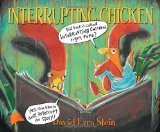Dawn Little's Blog, page 17
September 19, 2011
Splat the Cat by Rob Scotton
Recommended Grades: 2-5
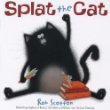

It's Splat the Cat's first day of Cat School. He's a bit worried and wonders how his day will go. Will he want to return tomorrow?
Lesson Idea:
Organization: Read aloud Splat the Cat and use it as a model text to teach circular ending as borrowed craft from the author. Read aloud the book and share other texts that have circular endings. Provide an area where students are able to look at mentor texts for a particular craft (after you have read aloud and discussed the craft) during writer's workshop. Encourage students to use the model texts and borrow from the author's craft in their own writing.
and use it as a model text to teach circular ending as borrowed craft from the author. Read aloud the book and share other texts that have circular endings. Provide an area where students are able to look at mentor texts for a particular craft (after you have read aloud and discussed the craft) during writer's workshop. Encourage students to use the model texts and borrow from the author's craft in their own writing.
©2011 by Dawn Little for Picture This! Teaching with Picture Books. All Amazon links are affiliate links and may result in my receiving a small commission. This is at no additional cost to you.
Filed under: circular endings, organization, six traits of writing, Splat the Cat, teaching with picture books Tagged: circular endings, organization, six traits of writing, Splat the Cat








September 12, 2011
Voices in the Park by Anthony Browne
Recommended Grades: 4-6


Voices in the Park follows four characters as they take a walk in the park. Each character provides his own point of view of the events that take place.
follows four characters as they take a walk in the park. Each character provides his own point of view of the events that take place.
This is a great model text to demonstrate point of view. Each character has his own point of view of the events in the park, that come together to make a whole story. Additionally, each character has a distinct voice – one is snobby, one is despondent, one is lonely, and one is fun.
Lesson Idea:
Point of View: Read aloud this text and use it as a model to demonstrate point of view. After students have had ample models of point of view, ask them to write their own piece that combines several points of view into one story.
Voice: Read aloud this text as a model for voice. Discuss how each character has a distinct voice based on his circumstances. Analyze how the author uses word choice to convey voice. After students have had practice with writing with voice, ask students to create a character sketch that provides background information on a character. Then ask students to take that background information and determine what the character's voice might sound like.
©2011 by Dawn Little for Picture This! Teaching with Picture Books. All Amazon links are affiliate links and may result in my receiving a small commission. This is at no additional cost to you.
Filed under: point of view, six traits of writing, teaching with picture books, voice, Voices in the Park Tagged: six traits of writing, teaching point of view, teaching voice, Voices in the Park by Anthony Browne








September 5, 2011
14 Cows for America by Carmen Agra Deedy
Recommended Grades: 4-6
In June2002, an unusual ceremony begins in a village in western Kenya. An American diplomat is surrounded by hundreds of Maasai people. A gift is about to be bestowed on the American people, and he is there to accept it.
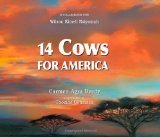

This touching story of a small village and their gift for our grieving country after the terrorist attacks of 9/11 is an appropriate book to read as we remember the 10th anniversary of this horrific event.
Lesson idea: 14 Cows for America is a fine book to just read aloud to your class and discuss the events and feelings surrounding that fateful day. These children have never known a world without color coding and long security lines at airports. The fact that a small village in Kenya gifted our country with something so meaningful and important to them is a great point of discussion.
is a fine book to just read aloud to your class and discuss the events and feelings surrounding that fateful day. These children have never known a world without color coding and long security lines at airports. The fact that a small village in Kenya gifted our country with something so meaningful and important to them is a great point of discussion.
Visualizing Text: If you would like to tie the book into a reading comprehension lesson, read it aloud and model how to visualize text. Read aloud the book without showing the pictures and model what you visualize as you read. Most of the text allows for a sensory experience.
©2011 by Dawn Little for Picture This! Teaching with Picture Books. All Amazon links are affiliate links and may result in my receiving a small commission. This is at no additional cost to you.
Filed under: 14 Cows for America, comprehension strategies, teaching with picture books, visualization, visualizing Tagged: 14 Cows for America, anniversary of 9/11, comprehension strategies, teaching with picture books, visualizing text








August 29, 2011
What Are You Doing? by Elisa Amado
August: Getting Started with Writer's and Reader's Workshop
As we round the corner of summer and start our preparations for "back to school" in the U.S., this month I'll share picture books that can be used as you plan for your writer's and/or reader's workshop.
Recommended Grades: 2-5
What Are You Doing? asks Chepito as he moves from person to person. As he moves along he learns a valuable lesson in reasons we read.
asks Chepito as he moves from person to person. As he moves along he learns a valuable lesson in reasons we read.
Lesson idea:
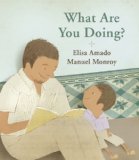

Reader's Workshop: Use this book to begin your Reading Workshop at the beginning of the year to discuss all the reasons we read. Read aloud this book and discuss the reasons that people are reading in the book. As a class, brainstorm other reasons we read and create a class list (include the reasons in the book as well). Display the list in the class and encourage students to add to the list as other reasons pop up throughout the year.
On a side note, this book is also a great multi-cultural model to have in the classroom.
©2011 by Dawn Little for Picture This! Teaching with Picture Books. All Amazon links are affiliate links and may result in my receiving a small commission. This is at no additional cost to you.
Filed under: Reading Reasons, teaching with picture books, What Are You Doing? by Elisa Amado








August 22, 2011
Wonderful Words: Poems About Reading, Writing, Speaking, and Listening selected by Lee Bennett Hopkins
August: Getting Started with Writer's and Reader's Workshop
As we round the corner of summer and start our preparations for "back to school" in the U.S., this month I'll share picture books that can be used as you plan for your writer's and/or reader's workshop.
Recommended Grades: 2-5
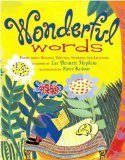

Wonderful Words: Poems About Reading, Writing, Speaking, and Listening is a collection of poetry about reading, writing, speaking, and listening. It's a celebration of words that influence our lives.
is a collection of poetry about reading, writing, speaking, and listening. It's a celebration of words that influence our lives.
Lesson idea:
Reader's Workshop: Use this book to begin your Reading Workshop at the beginning of the year to get to know your students as readers. Read aloud one or more of the poems in this collection and discuss how reading and words influence our lives. Then have students write their own poems related to reading or writing.
©2011 by Dawn Little for Picture This! Teaching with Picture Books. All Amazon links are affiliate links and may result in my receiving a small commission. This is at no additional cost to you.
Filed under: Getting to Know Students as Readers, Reader's Workshop, teaching with picture books, Wonderful Words by Lee Bennett Hopkins Tagged: getting to know your students as readers, reading workshop, Wonderful Words by Lee Bennett Hopkins








August 15, 2011
The Plot Chickens by Mary Jane Auch
August: Getting Started with Writer's and Reader's Workshop
As we round the corner of summer and start our preparations for "back to school" in the U.S., this month I'll share picture books that can be used as you plan for your writer's and/or reader's workshop.
Recommended Grades: 2-5
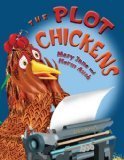

Henrietta, the chicken, is an avid reader who loves to check out books from the library to read to her aunts. She decides that because reading is so much fun, "writing books must be eggshilarating." That's when the fun really begins. . .
Lesson idea:
Writer's Workshop: The Plot Chickens is a perfect book to read aloud to your class as you begin writer's workshop for the year. Read aloud this book and discuss the steps that Henrietta takes to go through the writing process. How do Henrietta's steps fit in the writing process? As a class brainstorm steps a writer may take as he/she goes through the writing process. Post the steps as a class resource.
is a perfect book to read aloud to your class as you begin writer's workshop for the year. Read aloud this book and discuss the steps that Henrietta takes to go through the writing process. How do Henrietta's steps fit in the writing process? As a class brainstorm steps a writer may take as he/she goes through the writing process. Post the steps as a class resource.
©2011 by Dawn Little for Picture This! Teaching with Picture Books. All Amazon links are affiliate links and may result in my receiving a small commission. This is at no additional cost to you.
Filed under: The Plot Chickens, writers workshop Tagged: The Plot Chickens, writers workshop, writing manual, writing process








August 8, 2011
The Wonderful Book by Leonid Gore
August: Getting Started with Writer's and Reader's Workshop
As we round the corner of summer and start our preparations for "back to school" in the U.S., this month I'll share picture books that can be used as you plan for your writer's and/or reader's workshop.
Recommended Grades: 2-4
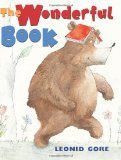

A rabbit finds this wonderful thing and thinks it will make a great house. A bear comes along and says it will make a great hat. What is it? A little boy comes along and knows exactly what it is (a book) and shares it with his new forest friends.
Lesson idea:
Reader's Workshop: Read aloud The Wonderful Book as you introduce your reader's workshop and discuss all the ways a reader might find a book (or text in general) useful. Create a class list of reasons we read or habits of readers. Continue to add to the list throughout the year and refer to it as needed during reader's workshop.
as you introduce your reader's workshop and discuss all the ways a reader might find a book (or text in general) useful. Create a class list of reasons we read or habits of readers. Continue to add to the list throughout the year and refer to it as needed during reader's workshop.
©2011 by Dawn Little for Picture This! Teaching with Picture Books. All Amazon links are affiliate links and may result in my receiving a small commission. This is at no additional cost to you.
Filed under: Reader's Workshop, teaching with picture books, the wonderful book by leonid gore Tagged: habits of readers, reader's workshop, reasons we read, the wonderful book by leonid gore








August 1, 2011
I'm in Charge of Celebrations by Byrd Baylor
August: Getting Started with Writer's Workshop
As we round the corner of summer and start our preparations for "back to school" in the U.S., this month I'll share picture books that can be used as you plan for your writer's workshop.
Recommended Grades: 3-5
This is the story of a girl who shares her love for desert life through her personal experiences which she turns into celebrations.
Lesson idea:
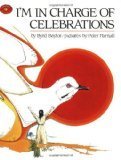 Writer's Workshop: Read aloud I'm in Charge of Celebrations and discuss how the girl turns her experiences into celebrations. Use the book as a model for a writer's notebook). As part of your writer's workshop, ask students to keep writer's notebooks for "seeds" (ideas for writing topics). Keep a writer's notebook yourself, as well. After reading aloud this book, with your class, brainstorm a list of everyday events that could be turned into celebrations. Provide students an opportunity to brainstorm their own (personal) list in their writer's notebook and add to it throughout the year as they think of other personal celebrations.
Writer's Workshop: Read aloud I'm in Charge of Celebrations and discuss how the girl turns her experiences into celebrations. Use the book as a model for a writer's notebook). As part of your writer's workshop, ask students to keep writer's notebooks for "seeds" (ideas for writing topics). Keep a writer's notebook yourself, as well. After reading aloud this book, with your class, brainstorm a list of everyday events that could be turned into celebrations. Provide students an opportunity to brainstorm their own (personal) list in their writer's notebook and add to it throughout the year as they think of other personal celebrations.
For additional posts on using a writer's notebook in Writer's Workshop:
Pictures from Our Vacation by Lynn Rae Perkins
When I was Young in the Mountains by Cynthia Rylant
Amelia's Notebook by Marissa Moss
©2011 by Dawn Little for Picture This! Teaching with Picture Books. All Amazon links are affiliate links and may result in my receiving a small commission. This is at no additional cost to you.
Filed under: I'm in Charge of Celebrations, writer's notebooks, writers workshop Tagged: I'm in Charge of Celebrations, writer's notebooks, writers workshop








July 25, 2011
Press Here by Herve Tullet
Recommended Grades: 2-5
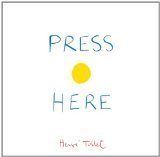

Press the yellow button. Go on, press it! It will take you into an imaginary world full of whimsy and color. A fascinating concept book, Press Here takes the reader on a journey page by page.
takes the reader on a journey page by page.
Lesson idea:
Writers Workshop: Read aloud this book and discuss how the author created an interactive reading experience using simple written directions. Discuss how the pictures change from page to page depending on what the reader does (following directions). As a class, choose a similar activity as press here to use as a stimulus for a shared writing piece. Using Press Here as a model, have students contribute directions and illustrations to create a class book.
as a model, have students contribute directions and illustrations to create a class book.
This could be a fun shared writing experience at the beginning of the school year to build community as well!
©2011 by Dawn Little for Picture This! Teaching with Picture Books. All Amazon links are affiliate links and may result in my receiving a small commission. This is at no additional cost to you.
Filed under: building community, Press Here, shared writing, writers workshop Tagged: building classroom community, Press Here by Herve Tullet, shared writing, writers workshop








July 18, 2011
Interrupting Chicken by David Ezra Stein
Recommended Grades: 2-5
Interrupting Chicken

It's bedtime for Little Red Chicken and she wants Papa to tell her a bedtime story. Papa says, "You're not going to interrupt the story, are you?" but Little Red Chicken just can't help herself. As soon as the story gets going, out jumps the little red chicken into the story and saving the characters from danger. Will she ever get to sleep?
Lesson idea:
Organization: Read aloud this book and discuss with students how the author organized the text. Note how there is a story within a story, and they are tied together through the main character. As a class, create a shared writing that incorporates a story within a story. Have students work on this technique in pairs as well, and eventually, have students write their own piece that incorporates a story within a story.
©2011 by Dawn Little for Picture This! Teaching with Picture Books. All Amazon links are affiliate links and may result in my receiving a small commission. This is at no additional cost to you.
Filed under: Interrupting Chicken, Interrupting Chicken by David Ezra Stein, organization, six traits of writing, teaching with picture books Tagged: Interrupting Chicken, organization, six traits of writing, story within a story









